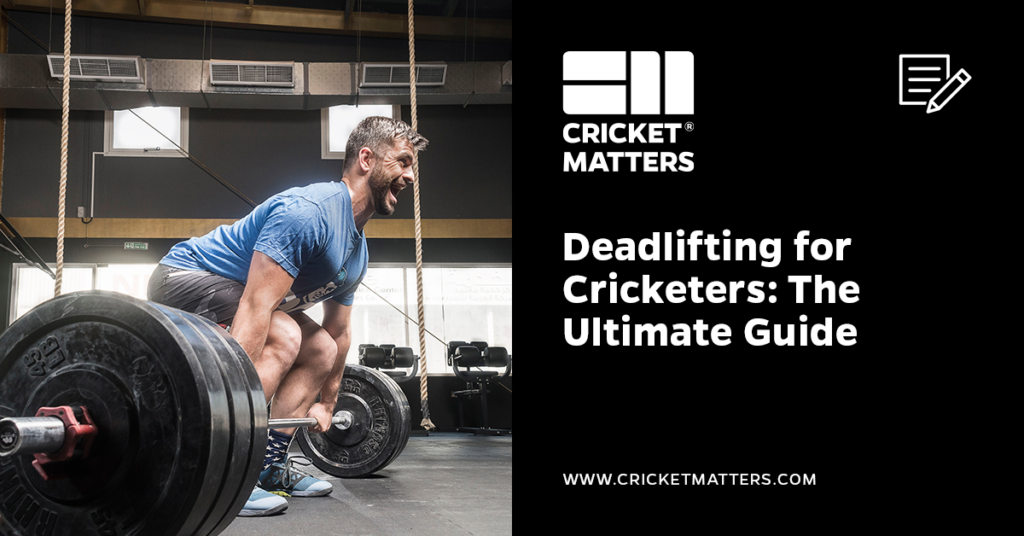
I hope you enjoy reading this blog post.
James Breese, Cricket Matters FounderIf you need my help with your cricket fitness, rehab, or nutrition needs, click here.
This is a complete gym workout for cricketers who want a workout plan to improve their athleticism and on-field performance.
We will assume all equipment is available to you in the gym.
Whether a batter or a bowler, this workout will help you increase your strength, power, agility, and stamina.
We will take you through a detailed routine that includes a warm-up, activation exercises, the main workout session, and a conditioning finisher.
This has been thoughtfully designed, with our years of expertise behind us, to help you best prepare for match days—by improving performance and potentially helping prevent injuries.
So, let’s dive in.
Table of Contents
Workout Overview
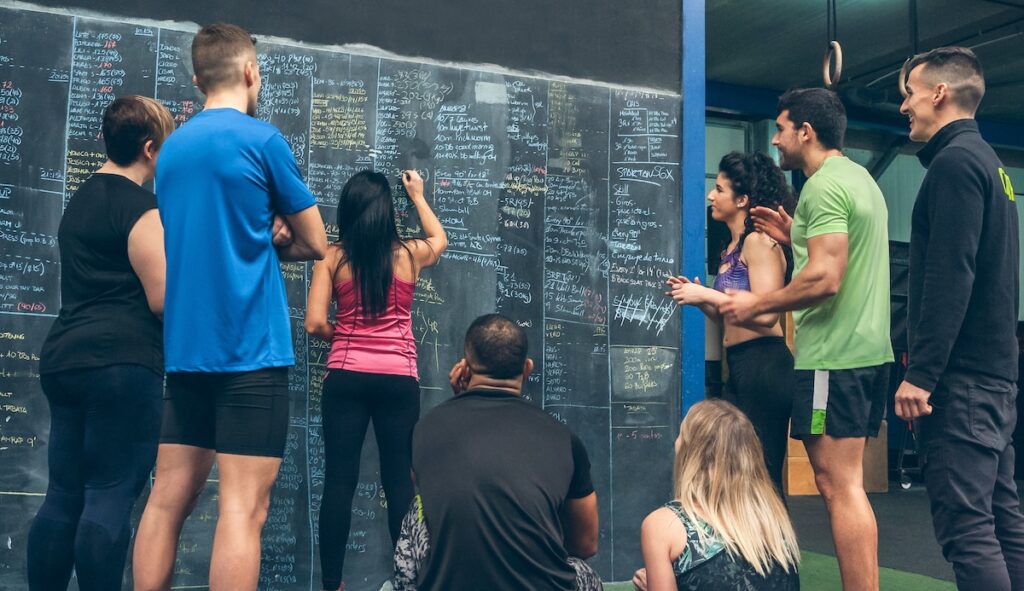
The Ultimate Gym Workout for Cricketers
For those who wish to see the whole workout or save it for future use so they can use in the future, I’ve created a quick table below.
For more detailed instructions on each exercise and how to perform it, please continue to read the whole article.
| Exercise | Sets | Reps | Rest | |
| Foam Roll | Quads, Hamstrings, Adductors, Low Back, T-Spine Roll Overhead | 1 | 30 seconds per area | No Rest |
| Dynamic Warm Up | Resisted Rocking W/Neck Mobility, V Stance T-Spine Rotation, Lizard Lunge Overhead Hip Opener, Glute Bridge: 3 reps w/5 secs hard exhale as you bridge | 1 | 30 seconds per area | No Rest |
| Activation | Floor Slide W/Breathing, Band Resisted Dead Bugs, KB Shin Box | 1 | 3 – 5 Reps | No Rest |
| Power Work | Box Jumps: Low Box, Med Ball Rotation Throws, Sprints: 10 Meter Dash, Trap Bar Jumps | 3 of each | See Description | 2 – 5 min |
| Strength Endurance Superset | Kettlebell Swings, Half Kneeling Bottoms Up Kettlebell Prese | 3 | 10 of each | 60 sec |
| Strength Endurance Tri-Set | Dumbbell Rear Foot Elevated Split Squat, TRX Rows, Half Kneeling Inline Chop | 3 | 2 minutes for each pose | 8 reps on each side |
| Conditioning | Assault Bike: 0.5 miles | 3 | N/A | Heart Rate @ 120bpm |
| Cool Down | Diaphragmatic Breathing, Pigeon Pose, Butterfly Stretch | 1 | 2 minutes each pose | As required |
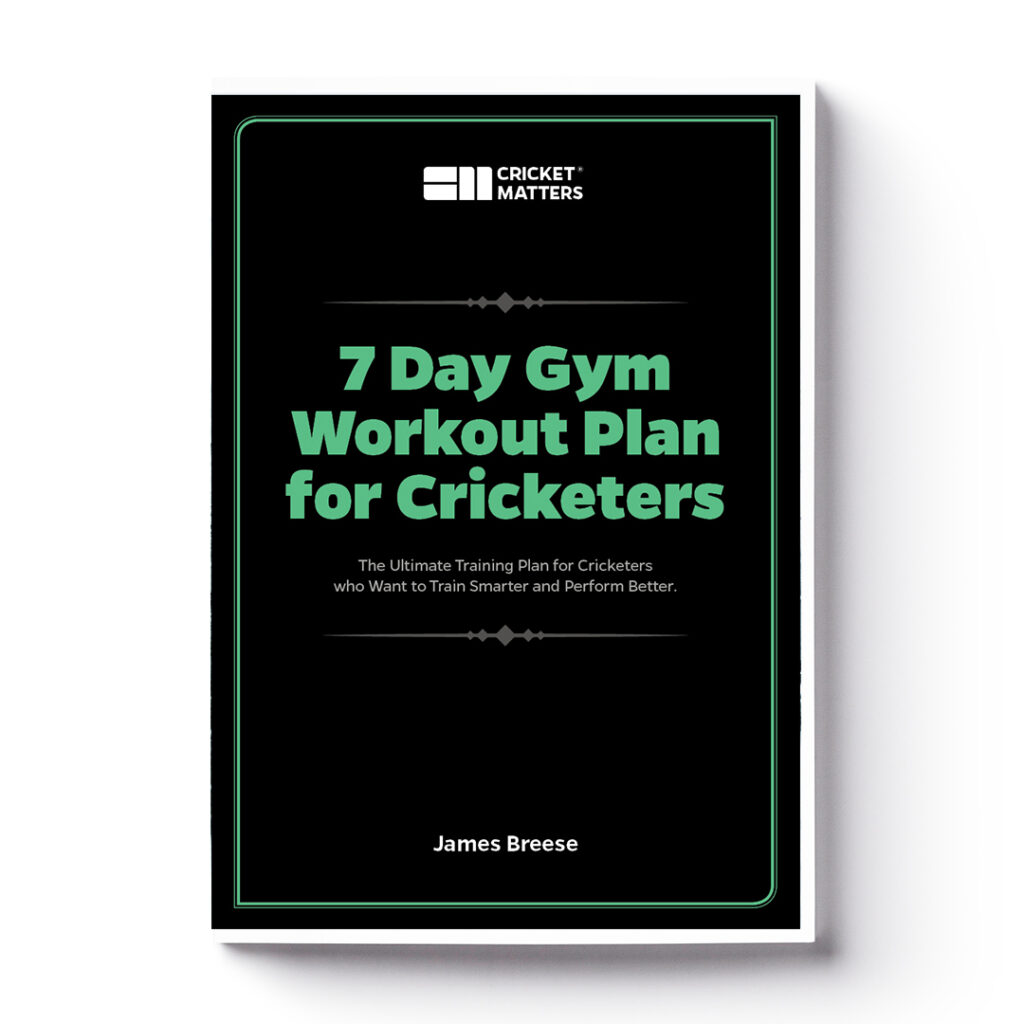
Have You Downloaded Our FREE 7-Day Gym Workout Plan?
Grab your complete step-by-step 7-day gym workout plan for cricketers today. There will be no more Guesswork. Just follow the plan and get results.
Pre-Workout Considerations
Bowlers, in particular, must take extra precautions during their workouts to avoid overuse injuries, especially to the shoulder and back areas.
Here are some essential safety tips:
- Limit Overhead Activities: Particularly during the cricket season, minimize the amount of overhead lifting to reduce stress on the shoulder joints.
- Focus on Flexibility and Strength: Ensure your workout includes exercises promoting flexibility and muscular balance. This approach helps in reducing the risk of muscle imbalances and subsequent injuries.
- Start Light: Begin with lighter weights and gradually increase the intensity. This method allows your body to adapt without straining your muscles and joints.
- Consult a Professional: If possible, work with a fitness coach (book a strategy call with us) who understands a cricketer’s unique needs to tailor your exercises appropriately and ensure that your training is practical and safe.
How to Prepare Your Body and Mind

Preparing your body and mind before a workout is crucial to performing your best and preventing injuries.
Here’s how to get ready:
- Hydration: Begin your day with sufficient water intake and hydration before the workout. Proper hydration is essential for muscle function and overall health.
- Nutrition: Eat a balanced meal rich in carbohydrates and proteins at least 2-3 hours before your workout to fuel your body with the necessary energy.
- Mental Preparation: Spend a few minutes focusing on your goals for the session. Visualization techniques can help mentally prepare for the intensity of the exercises and improve focus.
- Dynamic Warm-Up: Always start with a dynamic warm-up to increase your heart rate and blood flow to your muscles. This step reduces the risk of injuries and prepares your body for high-intensity activity.
- Mindfulness and Breathing: Engage in mindfulness exercises and focus on your breathing. Practices like nasal breathing during warm-up can enhance your lung capacity and control, which is crucial for physical exertion and stress management during training.
Implementing these pre-workout tips ensures a safer, more effective, and mentally engaging training session that caters specifically to cricket’s rigorous demands.
The Warm-Up
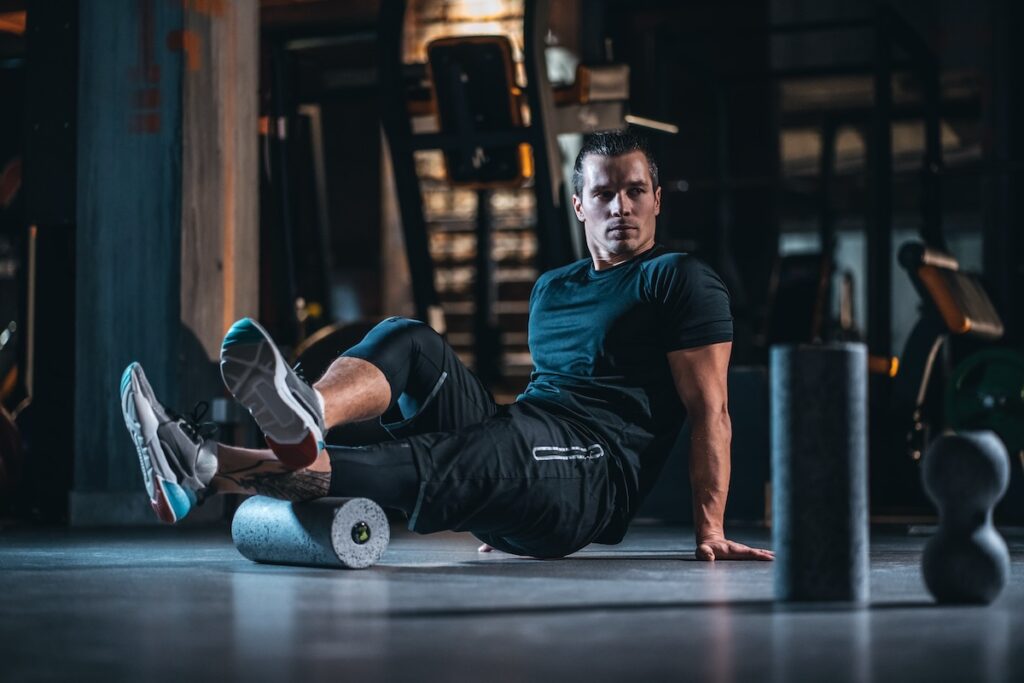
Start with Foam Rolling
Foam rolling is an excellent method to prepare muscles for a workout and improve overall mobility. (Wiewelhove et al. 2019)
It can help break down tight muscle fibres and increase blood flow.
But more importantly, it improves joint position sense and positively influences muscle activation, getting you fired up for the workout while reducing the risk of injury.
Here’s a simple foam rolling workout you can do in your warm-up routine:
Target Areas: Quads, Hamstrings, Adductors, Low Back, T-spine
- Quads: Lie face down and place the foam roller under your thighs. Roll forward and backward from your hip to just above your knee using your forearms. Spend 30 seconds on each leg, pausing on any particularly sore spots.
- Hamstrings: Sit with extended legs and place the foam roller under your thighs. Support yourself with your hands behind you as you roll from the back of your knees to just under your buttocks. Again, spend about 30 seconds focusing on each hamstring.
- Adductors: Position yourself on your stomach with one leg on the foam roller bent at a 90-degree angle. Roll from the inner thigh up to near the pelvic area. This move targets the often-neglected adductor muscles.
- Low Back: Sit on the ground and place the foam roller behind you under your lower back. Support your head with your hands and gently roll back and forth across the lower back area, being careful not to strain your spine.
- T-Spine: Lay on your back with the foam roller under your upper back. Cross your arms over your chest or place them behind your head to support your neck. Lift your hips slightly off the ground and gently roll from your mid to upper back, focusing on the thoracic spine, which is crucial for upper body mobility.
Each area should be rolled for approximately 30 seconds to 1 minute before moving on to the next.
Foam rolling not only warms up the muscles but also helps reduce muscle soreness from previous workouts, making it a vital part of any cricketer’s warm-up routine.
Dynamic Warm-Up Exercises
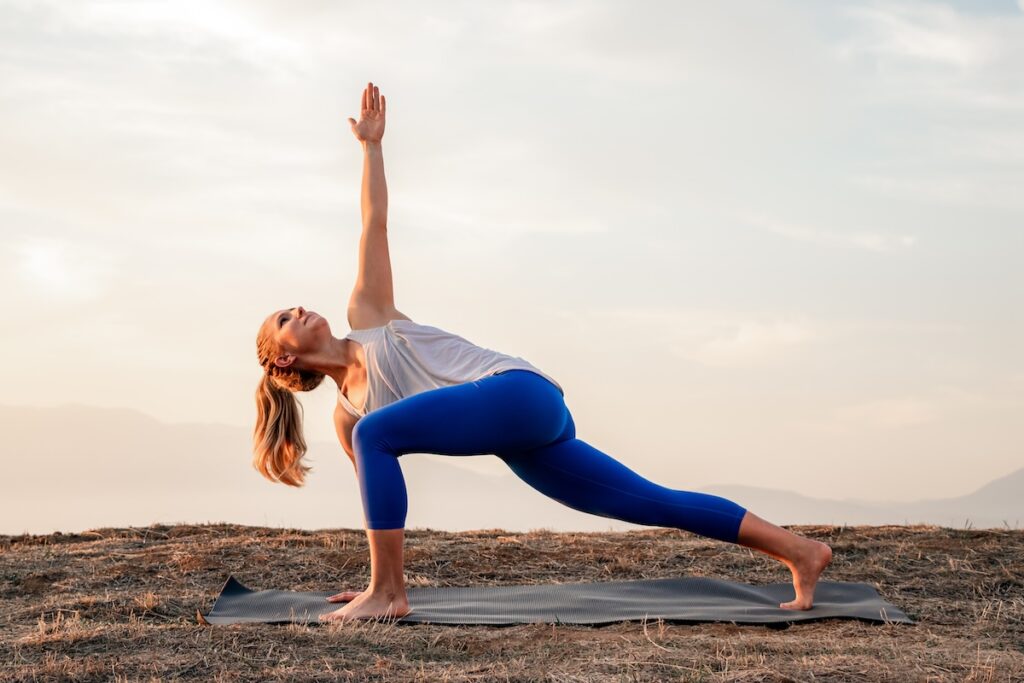
Immediately after foam rolling, we move to dynamic warm-up exercises designed to prepare the body for physical activity by increasing heart rate, enhancing blood flow to muscles, and improving flexibility and joint mobility.
These exercises help reduce the risk of injuries, getting you moving better and improving performance.
Each exercise should be performed for approximately 30 seconds to 1 minute before moving on to the next.
Resisted Rocking with Neck Mobility
This exercise involves gentle rocking back and forth on the hands and knees while incorporating neck movements to improve flexibility and mobility in the cervical spine.
It helps in loosening the neck, shoulders, and upper back.
V Stance T-Spine Rotation
Starting in a wide-legged stance, bend forward at the hips, placing one hand on the ground for support.
Extend the other arm towards the ceiling while rotating your thoracic spine (upper back).
This movement targets the rotational mobility of the T-spine, which is crucial for overhead activities and rotational sports.
Lizard Lunge Overhead Hip Opener
Begin in a lunge position with one foot forward and hands on the ground.
Lift the inside hand and reach it overhead towards the back, creating a deep stretch through the hip flexors and engaging the core.
This exercise is excellent for opening up the hips and enhancing hip mobility.
Glute Bridge with Breathing Focus
Lie on your back with your knees bent and feet flat on the ground.
Lift your hips towards the ceiling, forming a straight line from your knees to your shoulders.
Focus on deep breathing while holding the bridge position to help improve core stability and strengthen the lower back and glutes.
Activation Exercises
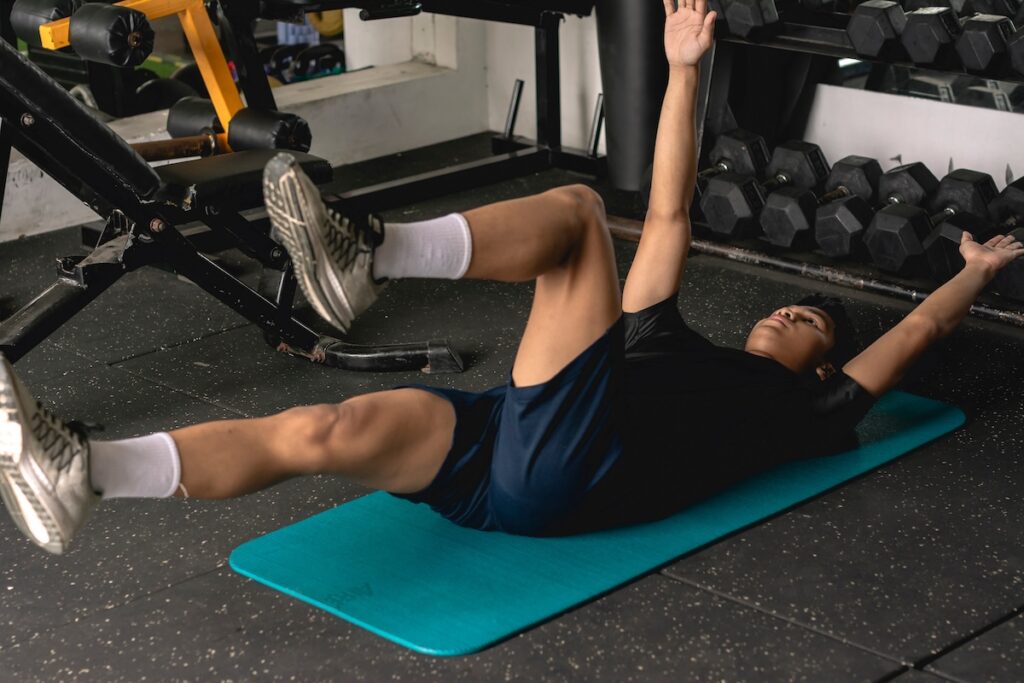
Activation exercises are critical for preparing the muscles for more strenuous activities.
These exercises help to “wake up” the muscles, ensuring they are engaged and ready to support the body during workouts, thereby preventing injuries.
Purpose of Muscle Activation
Muscle activation exercises stimulate the muscles that may not be used extensively during daily activities but are crucial for sports and other physical tasks.
These exercises enhance neural drive to the muscles, improve coordination, and increase blood flow and oxygen supply to the muscles.
An effective activation sequence can prime the body for performance and protect against the risk of injuries.
It typically involves light movements that mimic the workout or sport, progressively engaging more muscle groups and increasing intensity.
How to Perform
Perform this routine once continuously, moving from one exercise to another without resting.
Focus on controlled movements and proper form throughout each exercise.
Floor Slide with Breathing
This exercise involves lying on your back with arms in a “W” position and sliding them up over your head while keeping them flat on the floor.
- Position: Lie on your back on a flat surface, knees bent, and feet flat on the ground. Place your arms in a “W” shape at your sides.
- Action: Slowly slide your arms above your head, keeping them flat on the floor.
- Breathing: Take 3 to 5 deep breaths. Inhale as you slide your arms up, and exhale as you return them to the starting position.
- Repetitions: Complete the arm slides synchronized with your breathing for 3 to 5 breath cycles.
Syncing these movements with controlled breathing helps activate the shoulder and upper back muscles and improves thoracic mobility.
Band Resisted Dead Bugs
- Position: Lie on your back with knees raised to 90 degrees and hands extended towards the ceiling, holding a resistance band stretched between your hands.
- Action: Simultaneously extend your right leg and lower your left arm behind your head, keeping the band taut. Return to the starting position and switch sides.
- Repetitions: Perform three reps on each side, alternating smoothly.
Holding a resistance band with your hands and extending your opposite arm and leg, the band-resisted dead bugs exercise focuses on core activation.
This movement challenges stability and coordination, engaging the deep core muscles to stabilize the spine during alternating limb movements.
KB Shin Box
- Position: Sit on the floor with your legs at 90-degree angles, with the left leg in front and the right leg to the side. Hold a kettlebell at chest level.
- Action: Lift your knees and rotate them to the opposite side, transitioning your right leg to the front and the left to the side.
- Repetitions: Perform three reps on each side, maintaining a steady pace and controlled movements.
The KB (Kettlebell) Shin Box exercise focuses on activating the glutes and hip rotators.
Sitting with legs at 90-degree angles, alternating the knees from side to side with a kettlebell at chest level, helps improve hip mobility and stability, preparing the lower body for dynamic actions.
Remember, the goal of the activation round is to engage and activate your muscles effectively, preparing them for more intense physical activity.
Keep the transitions smooth and maintain focus on your form and breathing.
Further Reading
The Main Workout
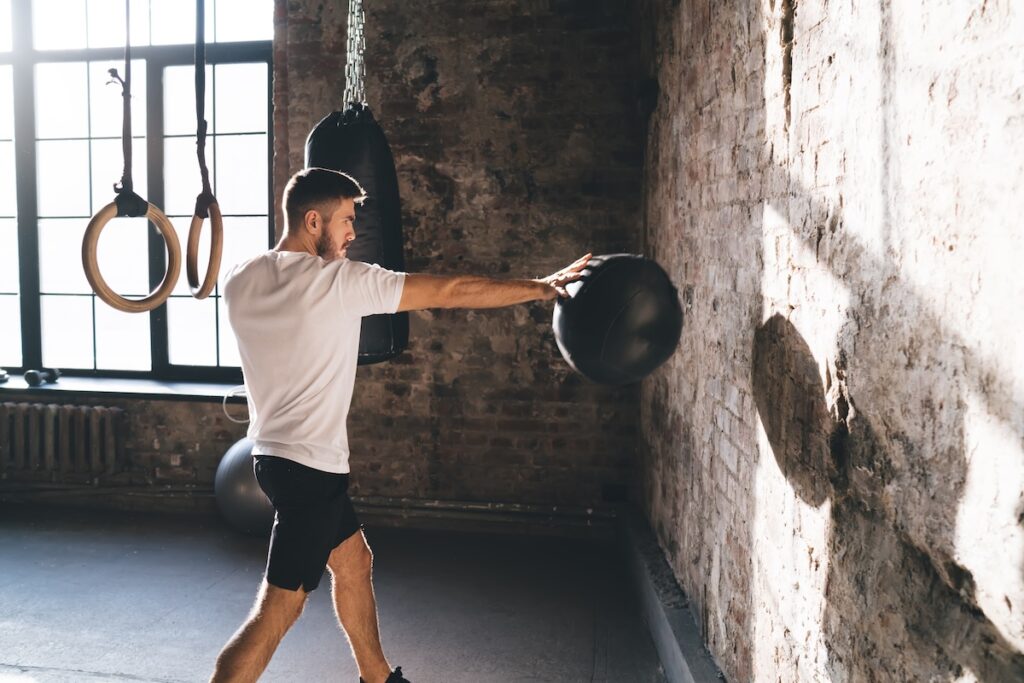
This workout section focuses on developing power through dynamic and explosive movements that engage multiple muscle groups.
Each exercise enhances your athletic performance by increasing strength and explosiveness.
Power Work
Power exercises help improve your ability to exert maximum muscular contraction instantly in an explosive burst of movements.
The goal is to increase your speed and strength, significantly improving your athletic ability as a cricketer.
1. Box Jumps: Low Box
- Description: This exercise focuses on explosive leg power and coordination.
- Execution: Stand before a low box with your feet shoulder-width apart. Perform a squat to initiate the jump, then explode upwards onto the box. Land softly in a squat position and step back down carefully.
- Repetitions: Perform 3 sets of 5 jumps.
2. Med Ball Rotation Throws
- Description: It develops rotational power, which is crucial for throwing and rotational sports.
- Execution: Stand with your feet shoulder-width apart, holding a medicine ball with both hands. Rotate your torso to one side and then explosively throw the ball against a wall to the side by rotating your torso and hips. Catch the ball on the rebound for one rep.
- Repetitions: Perform 3 sets of 8 throws on each side.
3. Sprints: 10 Meter Dash
- Description: Enhances acceleration and explosive starting speed, crucial for many sports.
- Execution: Use acceleration ladders or wickets to set up your sprinting path. Position yourself at the starting line in a ready stance. On your mark, explode forward and sprint through the 10 meters as fast as possible, focusing on quick, powerful strides.
- Repetitions: Perform 3 sprints, allowing full recovery between each to maintain maximum effort and speed.
Incorporate these sprints into your main workout for power to improve your quickness and explosive power off the start.
4. Trap Bar Jumps
- Description: Utilizes a trap bar to add weight, enhancing lower body power and force production.
- Execution: Stand inside the trap bar and bend at your hips and knees to lower into a half-squat position. Explosively jump upwards, extending your hips, knees, and ankles. Land softly and reset after each jump.
- Repetitions: Perform 3 sets of 5 jumps.
Strength Endurance Superset
Supersetting involves performing two exercises back-to-back with no rest in between, which can significantly enhance strength endurance.
Perform the following exercises back to back, then rest. That’s one set.
Repeat as necessary.
5a. Kettlebell Swings
Description: Focuses on the hip drive and power, engaging the glutes, hamstrings, and core.
Execution:
- Position: Stand with feet slightly wider than hip-width apart.
- Setup: Hold a kettlebell with both hands in front of you.
- Action: Hinge your hips back, then drive through your hips to swing the kettlebell to chest height. Allow it to swing back between your legs, and repeat.
Repetitions: Perform 3 sets of 10 swings. No rest. Next exercise.
Follow this structured workout to build power efficiently. Ensure each movement is performed with a focus on form and explosiveness to maximize the benefits of your training session.
5b. Half Kneeling Bottoms Up Kettlebell Press
Description: Enhances shoulder stability and core strength, focusing on control and precision.
Execution:
- Position: Start in a half-kneeling stance with your right knee up and left knee down.
- Setup: Hold a kettlebell in the bottoms-up position at shoulder height with the right hand.
- Action: Press the kettlebell until your arm is fully extended, then carefully lower it back to the starting position.
Repetitions: Perform 3 sets of 8 reps on each side. Rest for 60 seconds, then repeat the set.
This exercise challenges your upper body and core stability, which is perfect for improving functional strength and coordination for cricket.
Strength Endurance Tri-Set
This is another variation of supersetting. However, it involves performing three exercises back-to-back without a rest in between.
Perform the next exercises back to back, then rest. That’s one set.
Repeat as necessary.
6a. Dumbbell Rear Foot Elevated Split Squat
Description: Targets the quads, glutes, and hamstrings, enhancing lower body strength and balance.
- Position: With a dumbbell in each hand, elevate one foot behind you on a bench or step.
- Setup: Keep the front foot flat about two feet before the bench.
- Action: Lower your hips by bending the knee of your front leg, keeping your back straight and chest up. Push through the front heel to return to the starting position.
Repetitions: Perform 3 sets of 8 reps on each side.
6b. TRX Rows
Description: Strengthens the back, shoulders, and arms, focusing on the upper body, and pulling strength.
- Position: Stand facing the TRX anchor point and grab the handles with an overhand grip.
- Setup: Lean back, extending your arms, with your body in a straight line and heels on the ground.
- Action: Pull your chest towards the handles, retracting your shoulder blades. Extend your arms to return to the starting position.
Repetitions: Perform 3 sets of 8 reps.
6c. Half Kneeling Inline Chop
Description: Improves rotational core strength and stability, beneficial for functional movements.
- Position: Kneel on one knee with the opposite foot forward, in line with your knee.
- Setup: Hold a cable or resistance band handle with both hands, extending your arms to the side of your front knee.
- Action: Rotate your upper body and pull the handle across your body to the opposite shoulder, engaging your core throughout the movement.
Repetitions: Perform 8 reps on each side. Rest for 60 seconds, and then repeat the tri-set.
Conditioning: Assault Bike
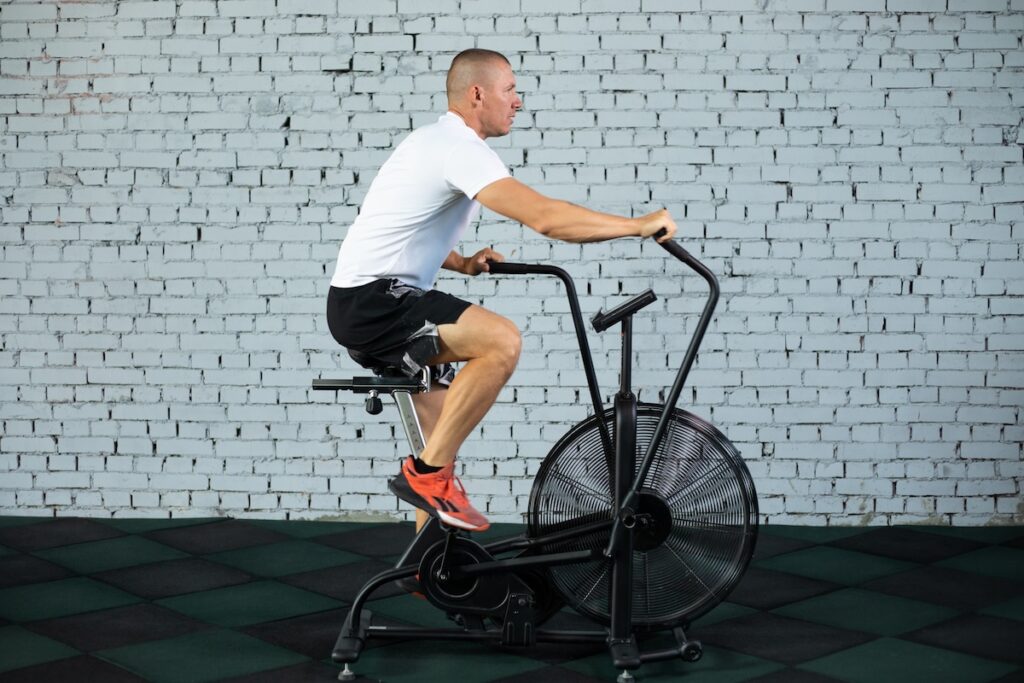
Objective: Improve cardiovascular endurance and control pacing during higher-intensity intervals.
Exercise: Assault Bike
Distance: 0.5 miles per interval
Sets: 3
Pace: Maintain an effort of approximately 80% of your maximum capacity. This is a vigorous but sustainable pace, not an all-out sprint.
Rest Between Intervals: Rest until your heart rate drops below 120 bpm.
Monitoring: It’s best to use a heart rate monitor to gauge when to begin the next round accurately. If you don’t have a heart rate monitor, rest until you can comfortably hold a conversation without feeling out of breath—this typically indicates that your heart rate has returned to a more manageable level.
Guidance: Focus on maintaining a steady pace throughout each interval. The goal is to build endurance and efficiency, not to push to exhaustion. This controlled approach helps improve your ability to sustain effort over time and recover more effectively between rounds.
The Cool Down
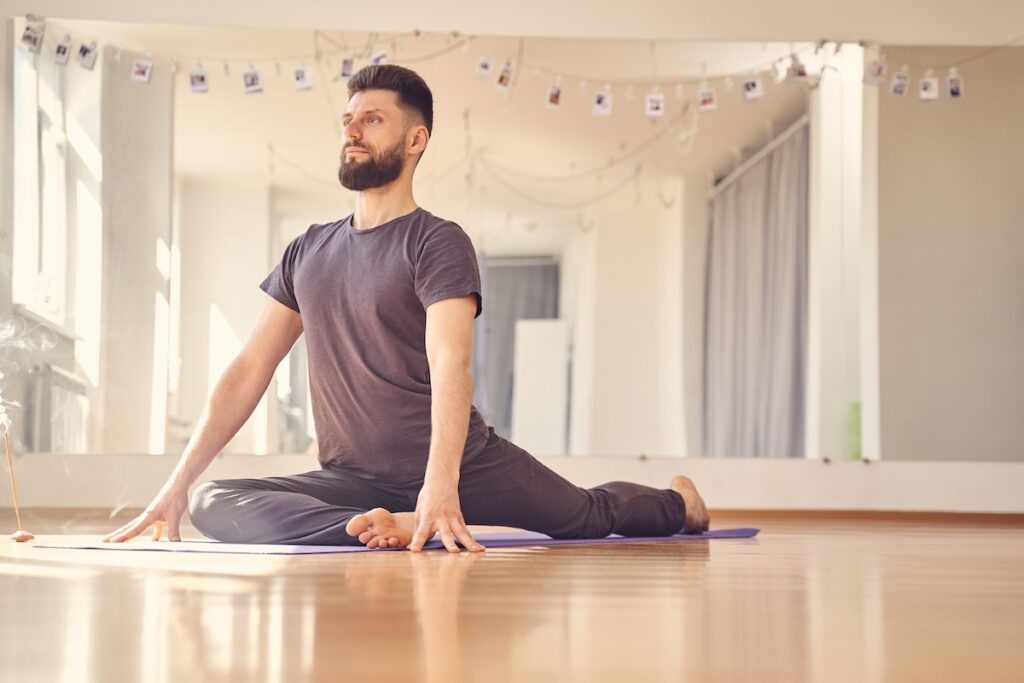
The cool-down is designed to gradually reduce heart rate and muscle temperature while incorporating stretching to reduce muscle stiffness and enhance flexibility.
Proper cool-down and stretching help transition your body into a state of recovery and can prevent injury.
This is very important for cricketers, and we don’t do enough of it.
Technique: Start with diaphragmatic breathing to activate the parasympathetic nervous system, which helps calm the body and reduce the heart rate after intense activity.
Diaphragmatic Breathing
- Position: Lie on your back or sit comfortably with one hand on your belly and the other on your chest.
- Action: Inhale deeply through your nose, allowing your belly to rise more than your chest. Exhale slowly through pursed lips, engaging your core to ensure complete exhalation.
- Duration: Spend 2-3 minutes performing this breathing exercise to initiate recovery.
Stretches
Focus on two effective stretches that target major muscle groups used during the workout.
Hold each stretch for 2 minutes for deep muscle relaxation and lengthening.
- Pigeon Pose (for glutes and hip flexors)
- Position: Start in a tabletop position and bring your right knee forward, placing it behind your right wrist while extending the left leg straight back.
- Execution: Lower your torso into a comfortable stretch, ensuring your hips are level. Hold and focus on deep breathing to enhance the stretch.
- Duration: Hold for 2 minutes on each side.
- Butterfly Stretch (for inner thighs and groin)
- Position: Sit with your spine straight, the soles of your feet together, and your knees dropped to the sides.
- Execution: Press your knees towards the ground using your elbows or hands for a deeper stretch. Maintain a straight back and avoid rounding the spine.
- Duration: Hold for 2 minutes, breathing deeply to help deepen the stretch.
Skipping the cool-down can increase stiffness and soreness; neglecting to stretch can decrease the joint range of motion and a greater risk of injuries.
As cricketers, we’re already injury-prone enough, so don’t skip this.
Ensure you dedicate adequate time to cool down properly after every workout.
Final Thoughts
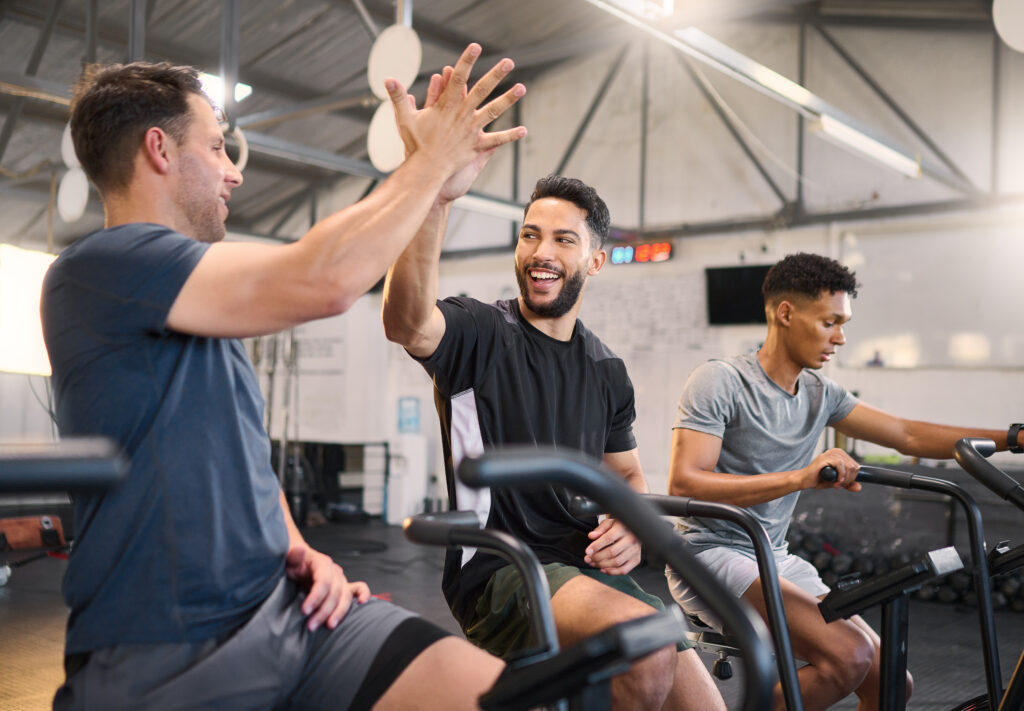
This gym workout for cricketers is designed to enhance overall physical fitness by focusing on multiple aspects of training.
By incorporating power work, strength and stability, speed training, and high-intensity cardio, this routine offers a comprehensive approach to fitness that improves muscular strength, cardiovascular endurance, and flexibility.
Key athletic aspects are needed for cricketers.
Each section is structured to build on the previous, ensuring balanced development across various physical capacities.
Additionally, the included cool-down and stretching routine is crucial for recovery, helping to prevent injuries and promote muscle relaxation.
Consistency is key to achieving and maintaining the benefits outlined in this gym workout program.
Remember, the journey to improved athleticism is a marathon, not a sprint.
Stay committed, and you will see significant improvements in your strength, endurance, and overall health.
If you need help, you can always book a strategy call with one of our team members.
Let me know how you get on with this workout.
Further Reading

Have You Downloaded Our FREE 7-Day Gym Workout Plan?
Grab your complete step-by-step 7-day gym workout plan for cricketers today. There will be no more Guesswork. Just follow the plan and get results.
FAQs
How Should a Cricketer Train in the Gym?
Cricketers should ideally train in the gym 2 to 4 times per week, focusing on a routine that shouldn’t exceed 60 minutes per session. This balances intensity with efficiency, preventing overtraining while maximizing strength, endurance, and flexibility gains. The workouts should include exercises targeting leg strength, core stability, and upper body power, which are crucial for enhancing on-field performance in cricket. This structured approach ensures adequate recovery and helps maintain peak physical condition throughout the cricket season.
Should Cricketers Go to the Gym?
Yes, gym workouts are crucial for cricketers. They help build the strength, agility, and fitness required for the sport, thus enhancing overall performance and reducing the risk of injuries.
How to Build Muscle for Cricket?
To effectively build muscle for cricket, cricketers should engage in targeted strength training while maintaining a calorie surplus to support muscle growth and recovery. The training should focus on major muscle groups through squats, deadlifts, and bench press-style exercises. A calorie surplus, meaning consuming more calories than the body expends, is crucial as it provides the energy needed for muscle synthesis. This nutritional strategy should be paired with a balanced intake of proteins, carbohydrates, and fats to optimize health and performance.
What Exercises Should I Do to Get Better at Cricket?
Cricketers should engage in strength training, plyometrics, and cardiovascular exercises to improve cricket skills. Specific drills that mimic the movements of batting, bowling, and fielding are also beneficial for skill enhancement.
What if I Don’t Have an Assault Bike
Switch this to a Concept2 rower. Perform 500m rows instead of 0.5 miles.

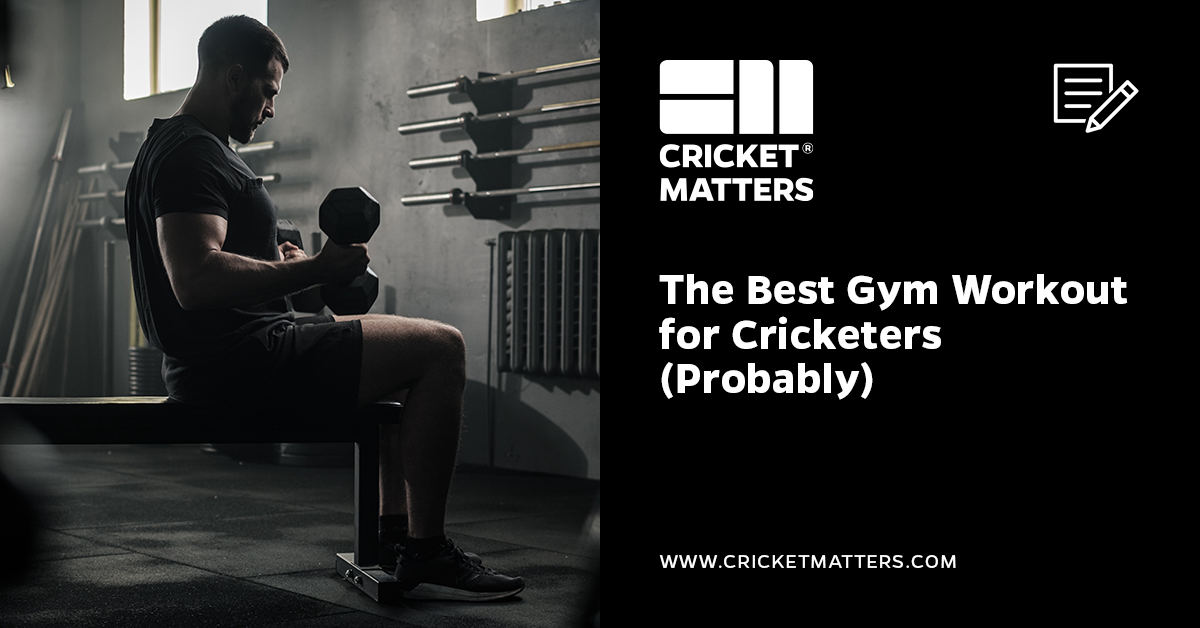
![[Case Study] Advanced Hiit Training Plan for Cricketers 4 Hiit Training for Cricketers](https://www.cricketmatters.com/wp-content/uploads/2024/04/HIIT_Training-1024x536.png)
